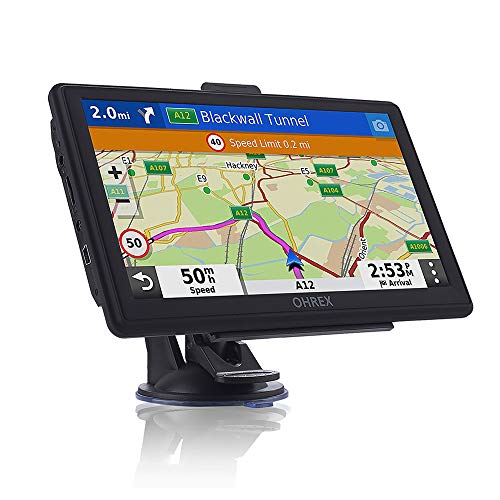HGV Sat Nav Trucks

HGV is the leading manufacturer of GPS vehicle navigation. The company offers a range of high-tech and technologically advanced vehicles that can be tailored to individual preferences. A Vehicle Tracking System (TVS) fitted into an HGV Sat Nav enables you to have real time positioning of your fleet vehicles, with the potential to greatly reduce delivery time. Many HGV truck and van fleets are equipped with TVS which allows them to be monitored by fleet management centres. These centres are able to reroute drivers to their destination if there is a problem, greatly reducing delivery times. The technology is continually improving and is installed on all new HGVs.
The TVS will not only tell the driver where they are but will also provide navigation instructions including speed, distance, fuel consumption, and direction of travel. The latest vehicles are fitted with systems that include infra red mapping, GSM /GPRS and Bluetooth. It may even be possible to integrate with touch screen interface controls so that the driver can use standard touch pads rather than the usual levers. Vehicle tracking may also be possible from inside the vehicle itself or via a portal provided by HGV.
These GPS devices can be used for a number of purposes, although most are aimed at motorists. Some of these may actually be driving themselves as they do not require any special skills to operate. A driver can simply set a course and follow it, although it is worth remembering that driving a vehicle is more than just the GPS facilities. Vehicle maintenance, parking and road laws must all be adhered to and a driver should never travel over a distance that could adversely affect their vehicle.
If you are buying an HGV Sat Nav for your business, it is worth considering whether you need one for a single vehicle or several vehicles. If you are using the device for only one vehicle such as a courier or bus, the device may work simply by linking up to a specific satellite navigation system. As a result, you will not have the options of customizing the display and you may not be able to view detailed maps or take a toll. This is because these systems require that the satellite dishes be in constant contact with the satellites. Satellite navigation requires some kind of dedicated infrastructure and therefore cannot be installed on a business fleet vehicle.
Most business owners and managers will find that the benefits of such navigation become clear when faced with traffic. Using the technology, motorists can avoid delays by planning routes ahead of time, and it can also allow them to reduce wait times. The best thing about HGV Sat Nav is that they can be used with multiple vehicles, which means that the driver does not have to physically stop and allow the passengers to board. In addition, with many modern models, the screens can be zoomed in and out, allowing the driver to view a large part of the road at one time.
Not only are HGVs a great choice for businesses, they are also perfect for private owners. Private owners can often benefit from having their own business GPS navigation system. Many companies provide the hardware, while others offer vehicle add-on options. Many of these add-ons include bluetooth technology, giving the driver hands free operation of the system. Other accessories allow users to add additional displays to their vehicle and, in some cases, to the back seat, which allows them to view more than one area at a time.
Vehicle navigation can be helpful, no matter where you are driving. In fact, some people choose to use the technology in their cars instead of personal navigation devices. As a result, they never have to touch buttons again and they can easily get lost. However, they must rely on the information displayed on their screens if they want to reach their destination.
For this reason, vehicle navigation with HGV Sat Nav trucks can be a tremendous benefit. Yet there are some drawbacks to consider as well. One of these is that drivers must remain within range of the satellites and they must be within reach of a computerized screen. Another is that the screens are not always clearly visible, even when they are on the road. They can also be difficult to read from certain angles.




